Hallway flooring ideas – 11 practical and stylish solutions
Create a functional and inviting entryway with these hallway flooring ideas
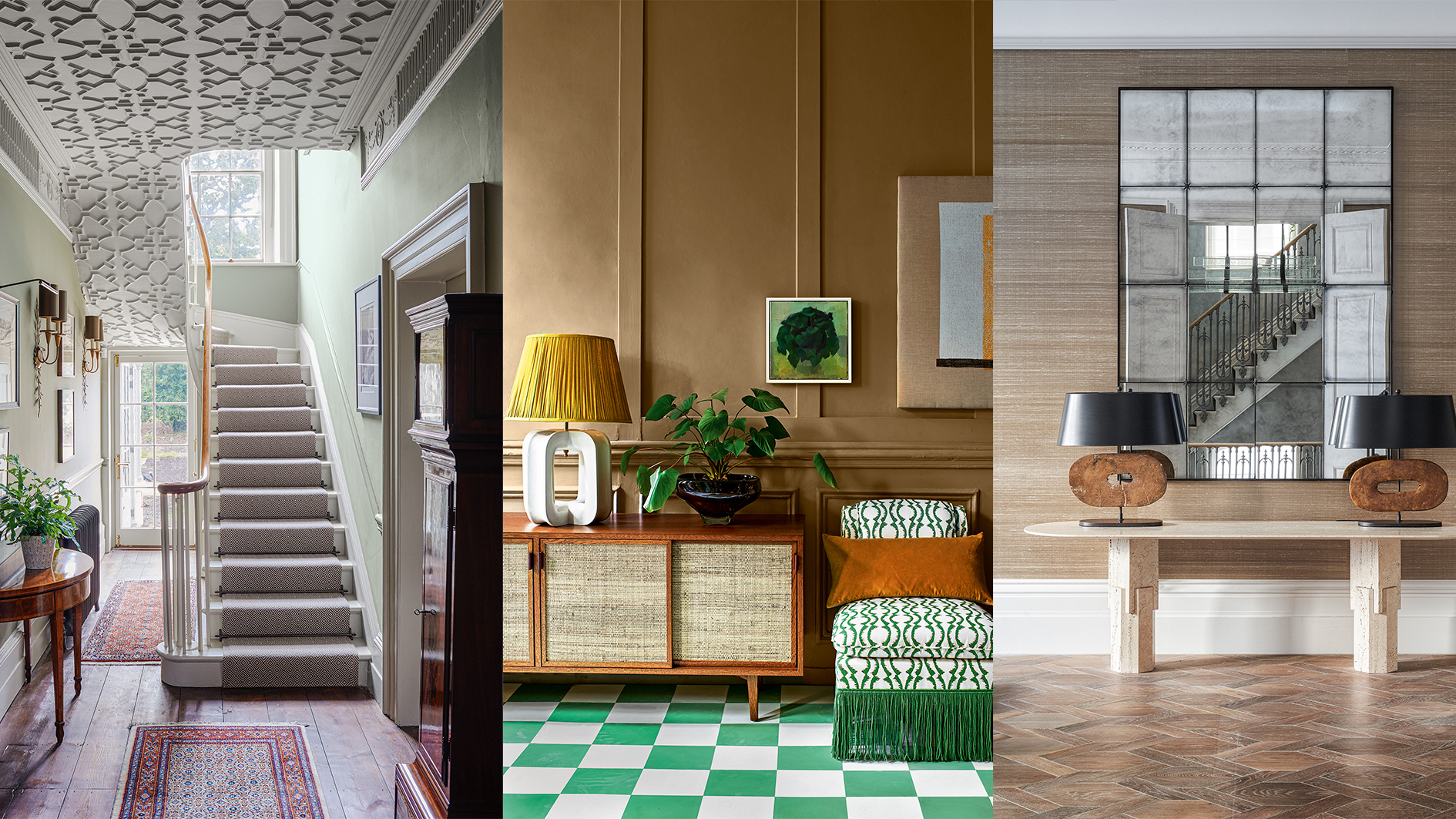
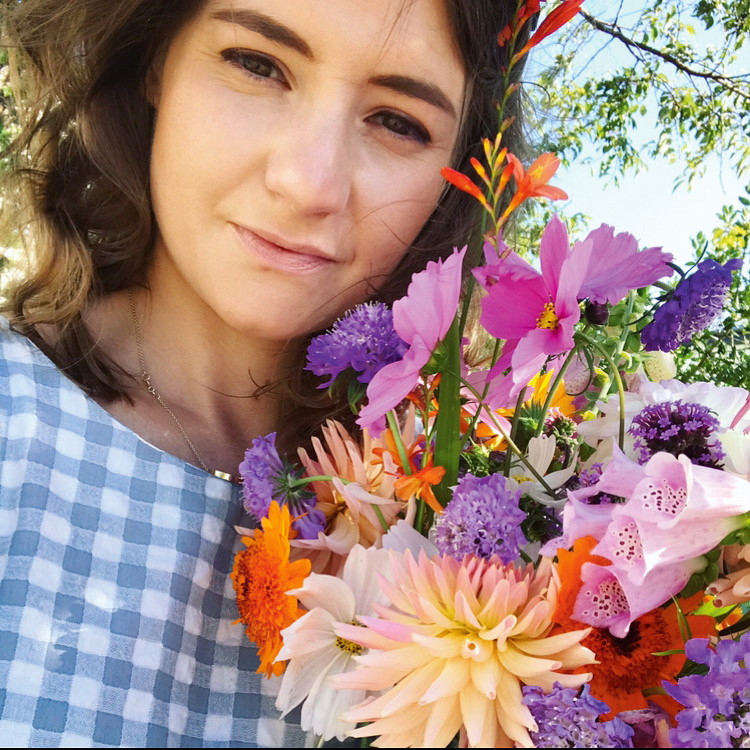
Choosing hallway flooring ideas is an important decision to make. As the entrance and exit to our homes, as well as connecting spaces, hallways are high traffic areas so whatever type of flooring you choose must be hard-wearing and durable.
Whilst practically may be the priority, with so many hallway flooring materials to choose from there's no need to compromise of aesthetics. The hallway floor is a brilliant way to add personality, color and pattern to your home, setting the tone for the rest of your home. In fact, as areas that we are only in for a short amount of time the hallway makes a brilliant place to be bold with decorating.
To help you get inspired we've rounded up a selection of different flooring looks and materials to add to your list of hallway ideas, along with some advice from the experts.
Hallway flooring ideas
With so many hallway flooring ideas to choose from, making a decision can be daunting, plus, flooring is not easy to change once laid, so this makes getting it right even more important. Be sure to do your research and to call in plenty of samples before you commit.
Hard surfaces such as stone, wood (both solid boards and engineered) ceramic tiles, encaustic tiles and low pile carpets are all durable, hardwearing options suitable for hallways, yet each comes with its own unique properties suited to different situations, so be sure to examine exactly how you use the space and how you want it to function.
As the space in which guests first enter into your home, it's important that hallways are inviting and welcoming and that they set the tone for the personality of your home. Flooring can play a huge role in this, having a big impact on the look and feel of the space with so many designs to choose from there's guaranteed to be a look to suit all tastes from laid-back, rustic stone to bold and playful glazed ceramic tiles.
1. Choose a classic chequerboard design
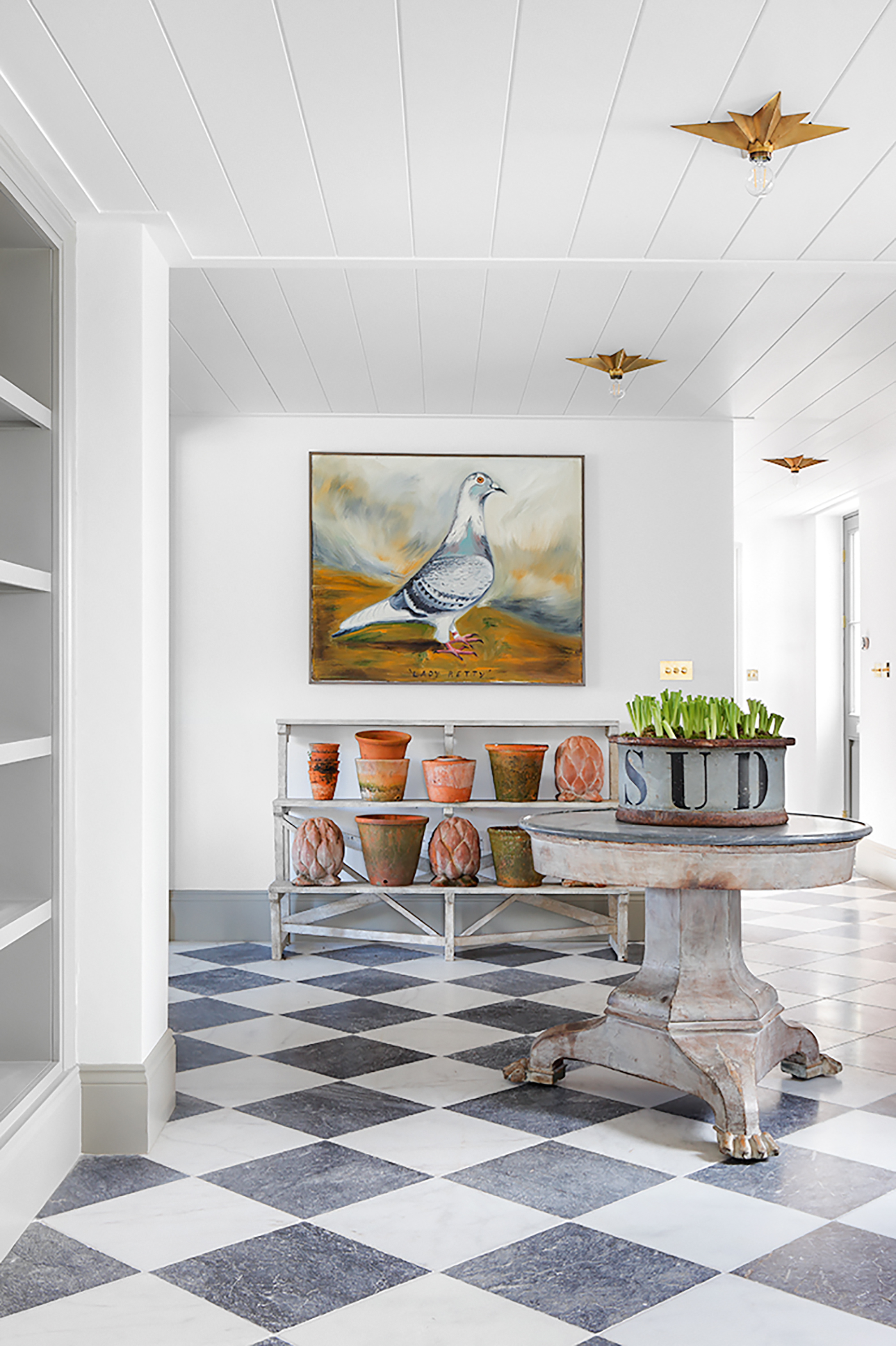
If you have a large hallway why not make a statement with a luxurious chequerboard floor of polished stone tiles? The floor is a brilliant surface to create a decorative focal point in a hallway as it adds interest whilst keeping the walls bright, open and inviting for guests.
‘A classic stone chequerboard floor is both practical and durable but also visually striking,’ says Tom Cox, co-founder of Hám Interiors, who designed this home. ‘Tones of grey and off-white will soften the look and create the illusion of a time-worn patina.'
2. Try practical engineered parquet
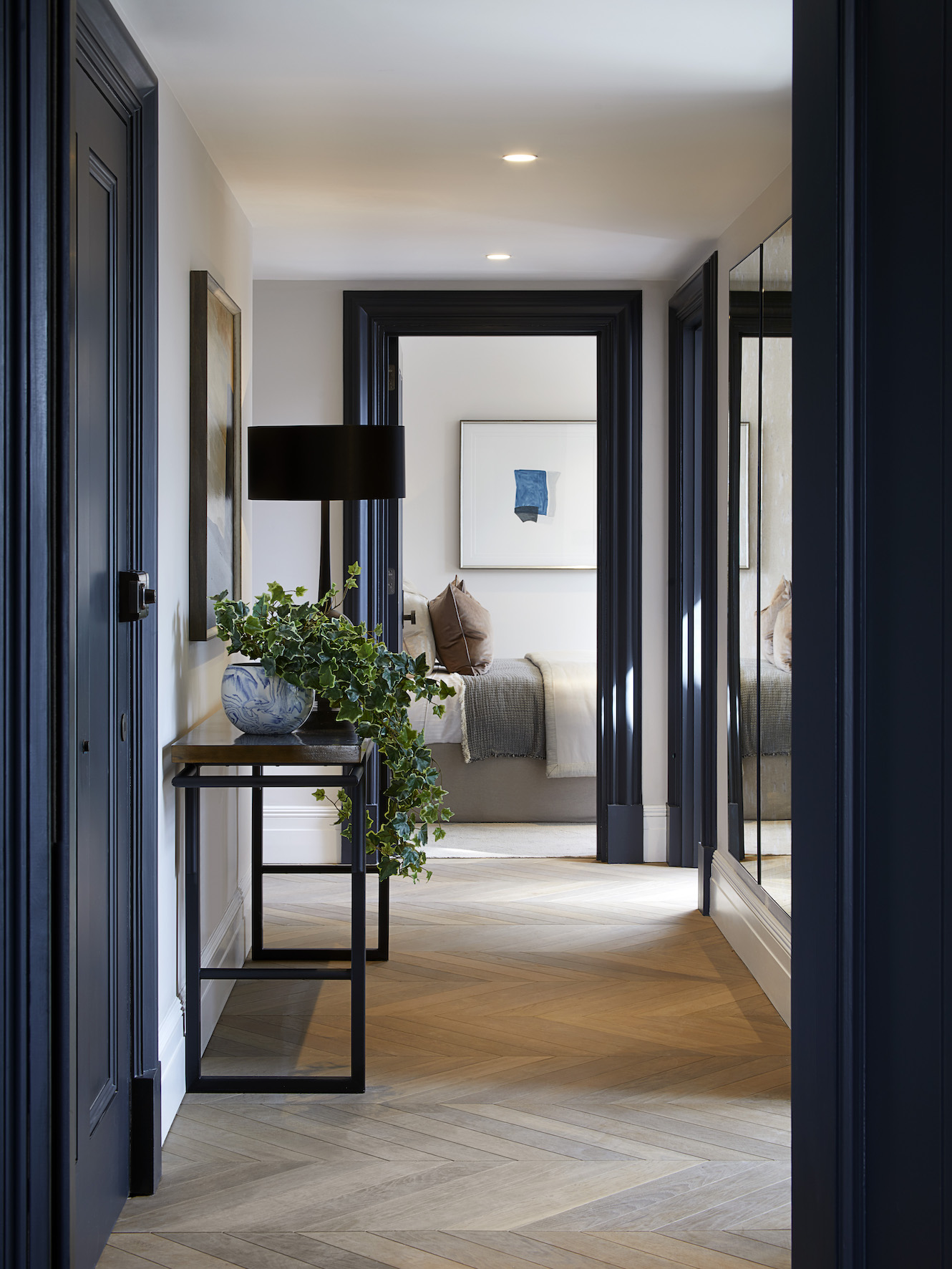
Combining the beautiful grains of solid timbers with the practical benefits of being durable, hardwearing and compatible with underfloor heating, engineered timber is popular flooring idea for hallways, plus there are all sorts of finishes and laying patterns.
'To keep the hallway light and airy, choosing a paler wood floor will not only bring the great outdoors in, but will keep the space feeling bright,' says Robert Walsh, founder and owner, Ted Todd. 'Introducing a pattern such as a chevron or herringbone will help to draw your eye through the space making it feel bigger, too.'
'What's more, lighter floors offer a contemporary feel and will add a subtle statement allowing you to use bolder color elsewhere. You can always opt for dark blue, grey or green for your doors, frames and other woodwork to add contrast and balance to the space,' adds Robert Walsh.
3. Turn heads with a bold geometric design
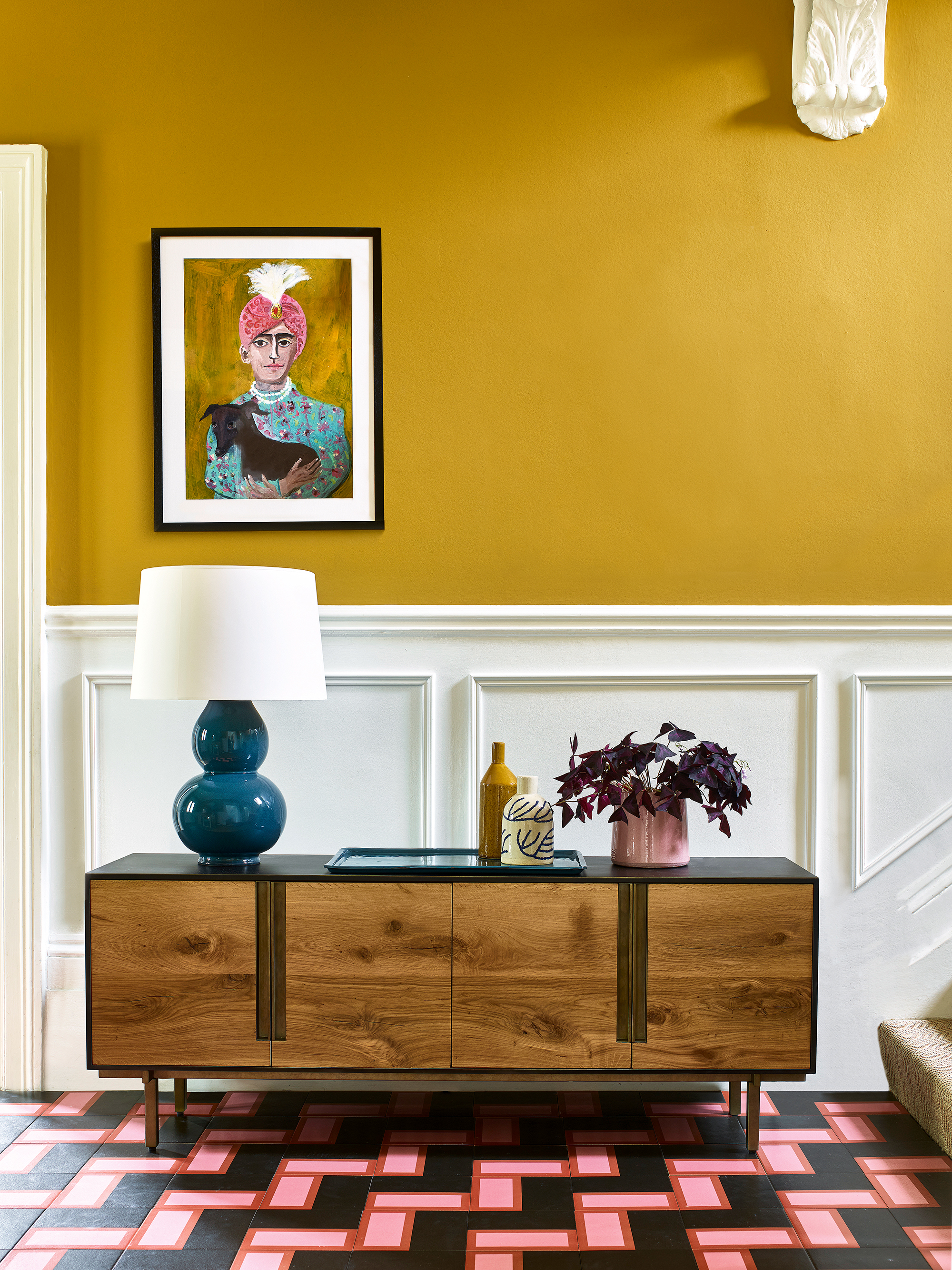
If you are looking for a playful and eye-catching look try tiling a hallway in vibrant geometric glazed porcelain tiles. Ideal for those that like to experiment, colorful porcelain tiles with simple patterns can be laid in infinite combinations and compositions to create all sorts of unique, head turning looks. Available in 41 designs, the Mattonelle Margherita glazed floor tiles from Mutina at Domus look particularly effective when teamed with vibrant hallway paint ideas.
4. Bring country charm with limestone tiles
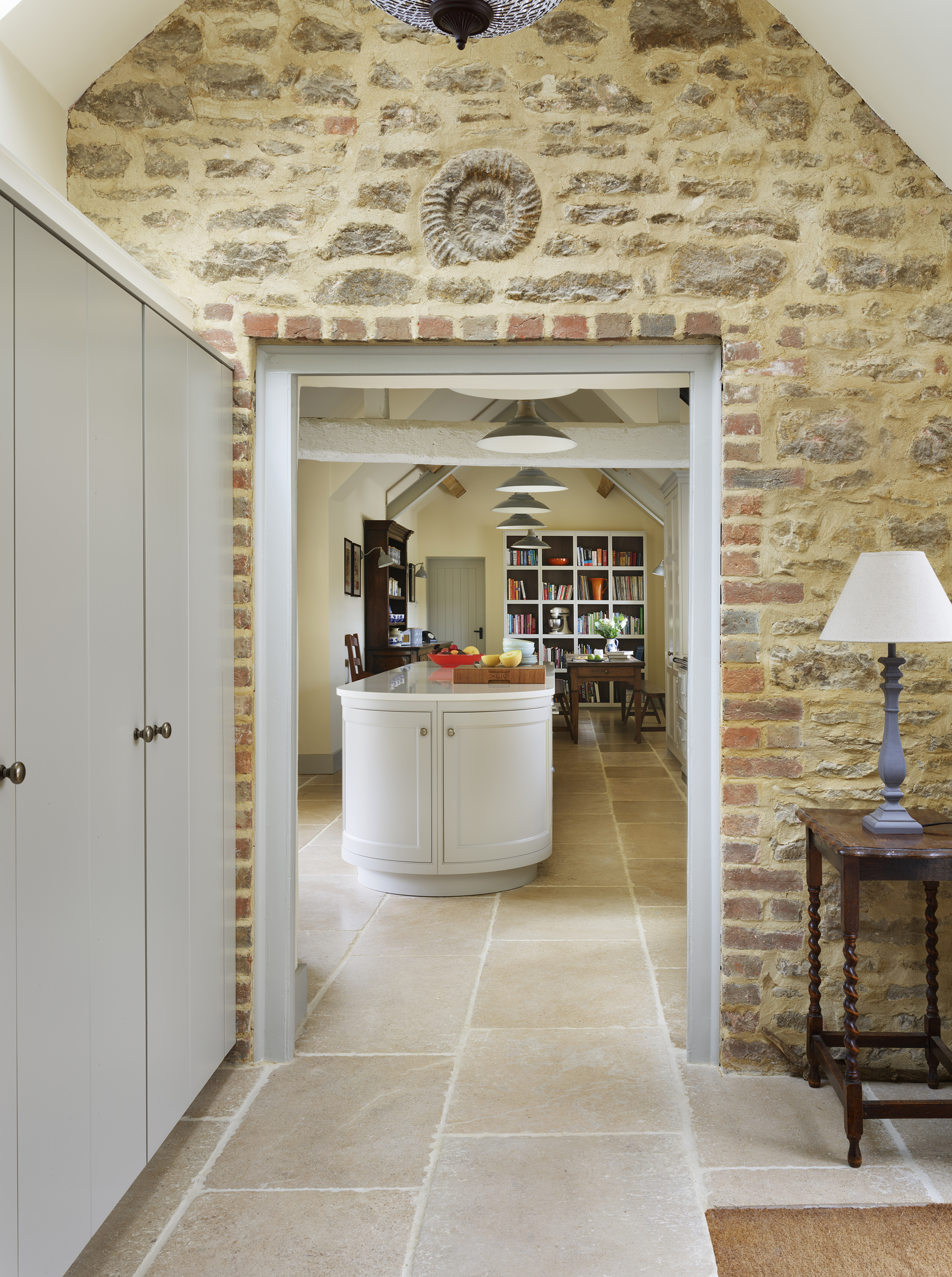
If you're looking for flooring to complement farmhouse decor ideas then you can't go wrong with rustic limestone tiles. Hardwearing and boasting beautiful natural markings from its sedimentary formation, limestone tiles bring the beauty of nature indoors plus will complement the rustic patina of exposed masonry.
There are many stone flooring types, but if you prefer an aged, lived in look then a tumbled limestone may be a good option as this is 'tumbled' to create a worn, antique finish and can give tiles a slightly rounded edge.
5. Nod to history with Victorian Minton tiles
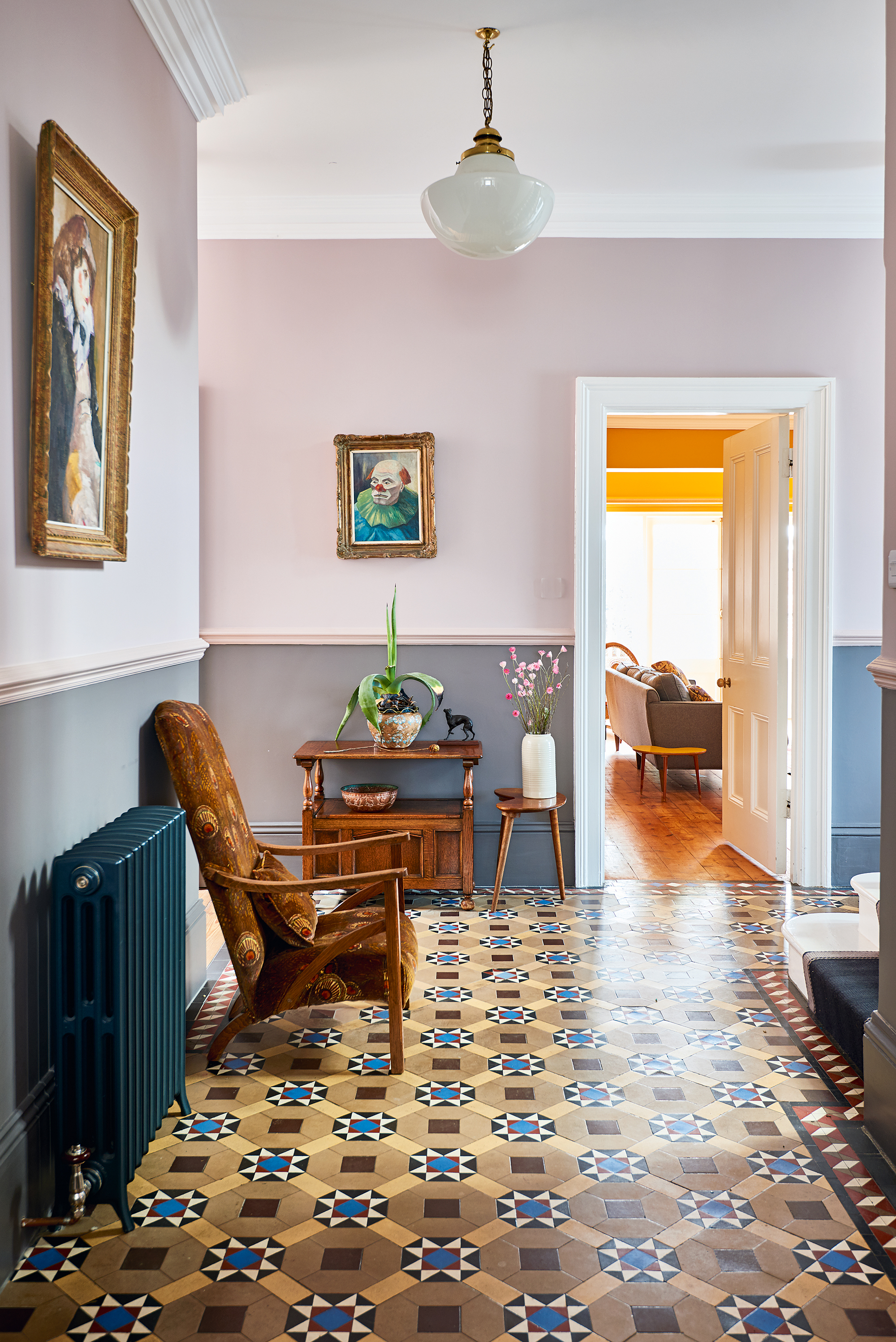
Whether you have a Victorian property and are looking for authentic flooring, or simply love traditional decorating ideas then you may consider Victorian hallway tiles. Made up of glazed and encaustic tiles, also known as Minton tiles, laid in striking geometric patterns, Victorian tiled floors brought color and prestige to entryways but were also very practical.
'Victorian tiled floors are prized original features so if you're lucky enough to have one in good condition be sure to preserve it and showcase it as part of your hallway design,' says Melanie Griffiths of Period Living magazine.
If you're looking to re-create the style, you could source reclaimed tiles for an authentic look, alternatively there are companies such as Original Style that offer new designs inspired by historic floors.
6. Add texture with a runner
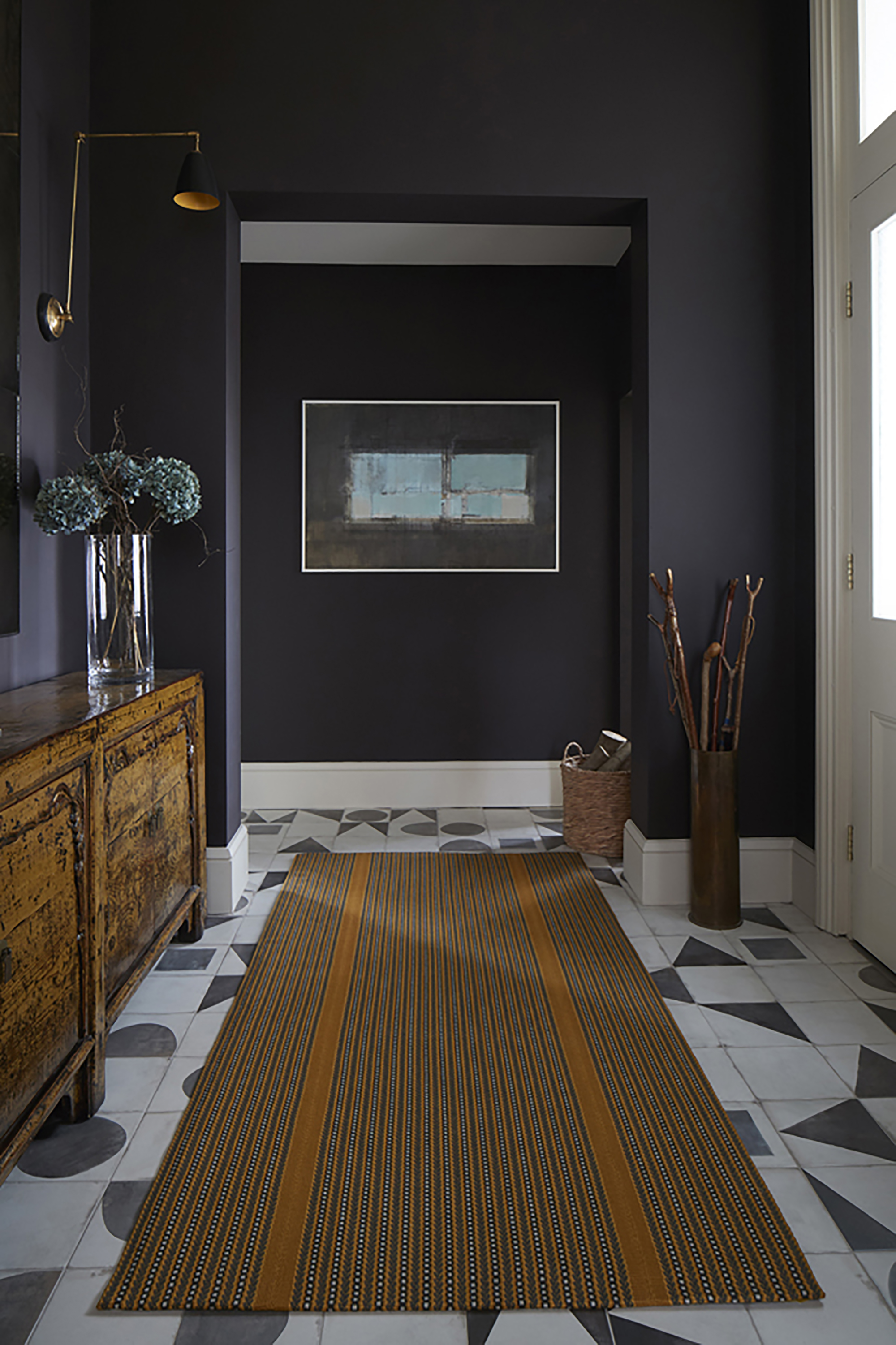
While stone, wood or tiled floors make a practical hallway flooring choice, they can leave entryway ideas feeling cold and echoey. 'Adding a hallway runner will help bring a layer of warmth and texture underfoot but will also bring other practical benefits,' says Andy Guard, creative director at Roger Oates Design explains.
'On wooden or stone floors, if laid with underlay, a hallway runner will soften the resonating sounds of crashing feet but allow the wood or stone beneath to be visible making them far chicer than fitted carpets,' he says. 'Stripe runners are especially versatile complementing decorative and geometric tiles and patterned or floral wallpaper.'
7. Choose decorative wood flooring
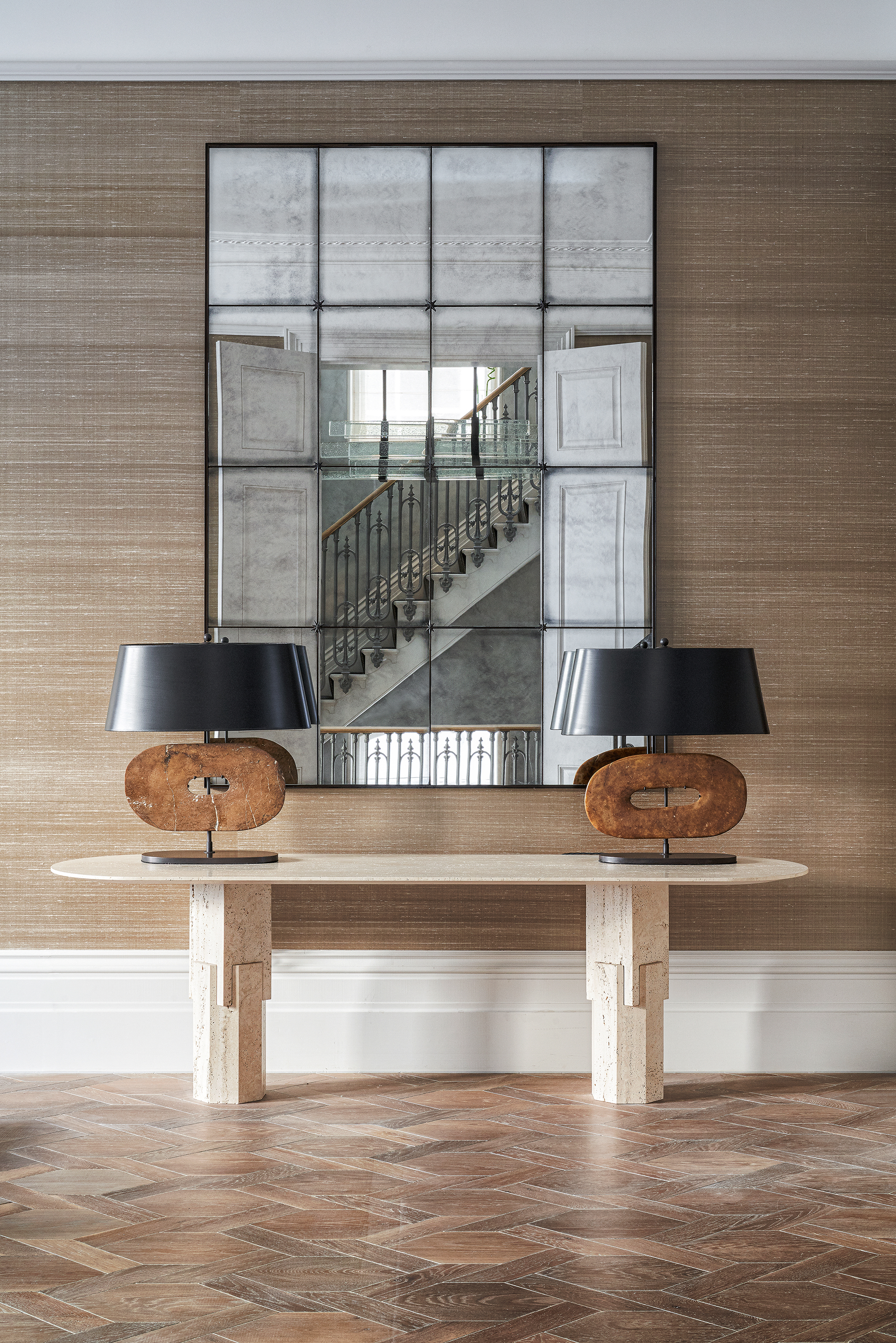
Wood is a timeless, durable choice for hallway floors but how it is laid can have an impact on the look and feel of your space. Wide planks are brilliant country decorating idea, but for something a bit more luxurious consider a more decorative design explains Robert Walsh, founder and owner of Ted Todd.
'Subtle geometric patterns can make the room feel elegant and grand, like the floor has been in your home for centuries. Think Parquet de Versailles – which is a design that was created in the 17th Century for the palace of Versailles – or basket weave, a continuous pattern that flows across the room.'
'Some options for a statement geometric wood floor are Chequerboard or Parquet de Ardeche designs,' he adds.
8. Turn heads with bold colors
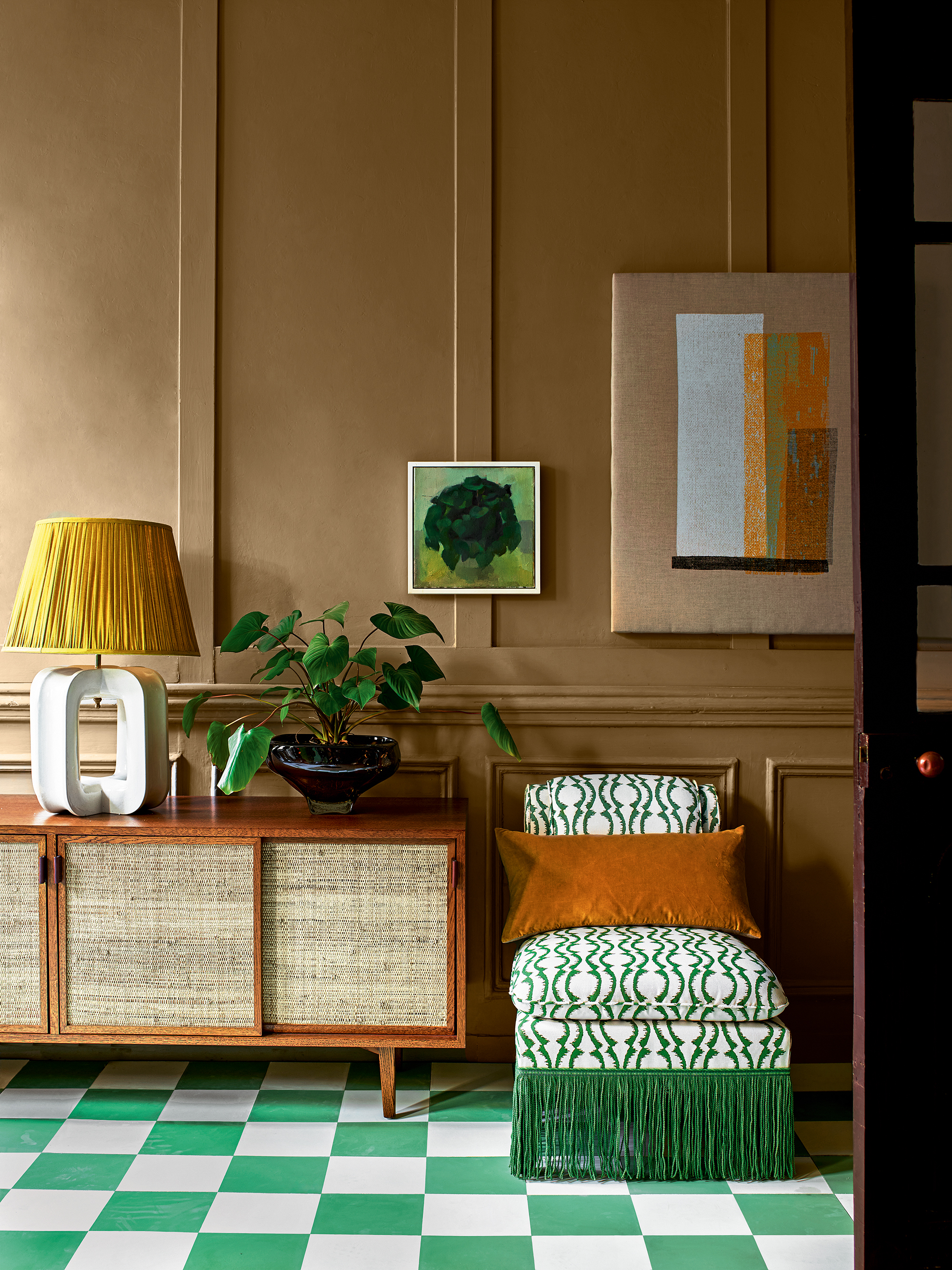
For a playful twist on the traditional chequerboard floor consider switching up black tiles for a vibrant color as demonstrated in this stylish hallway paved in Bert & May's encaustic tiles. As well as being fun and eye-catching chequerboard tiles, and floors with continuous geometric designs can make effective narrow hallway ideas for making spaces appear larger than they are as they have no obvious boundary.
9. Create a warm welcome with vintage carpets
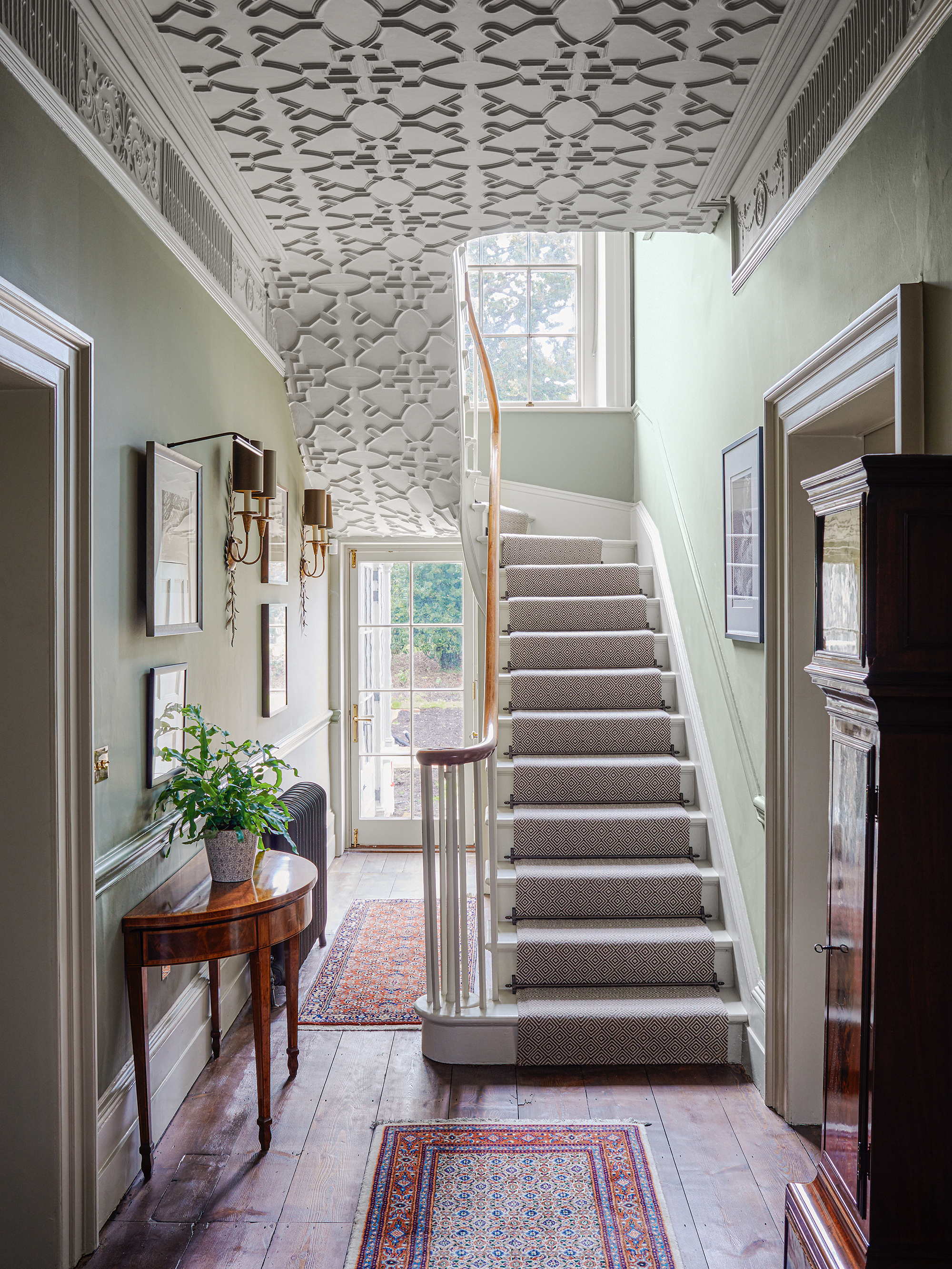
For a quick way to make traditional hallways feel homely and welcoming antique runners are a brilliant solution. With rich colors and decorative prints they bring instant warmth to wood floors while still allowing the beauty of the wood to shine through.
10. Choose a practical vinyl
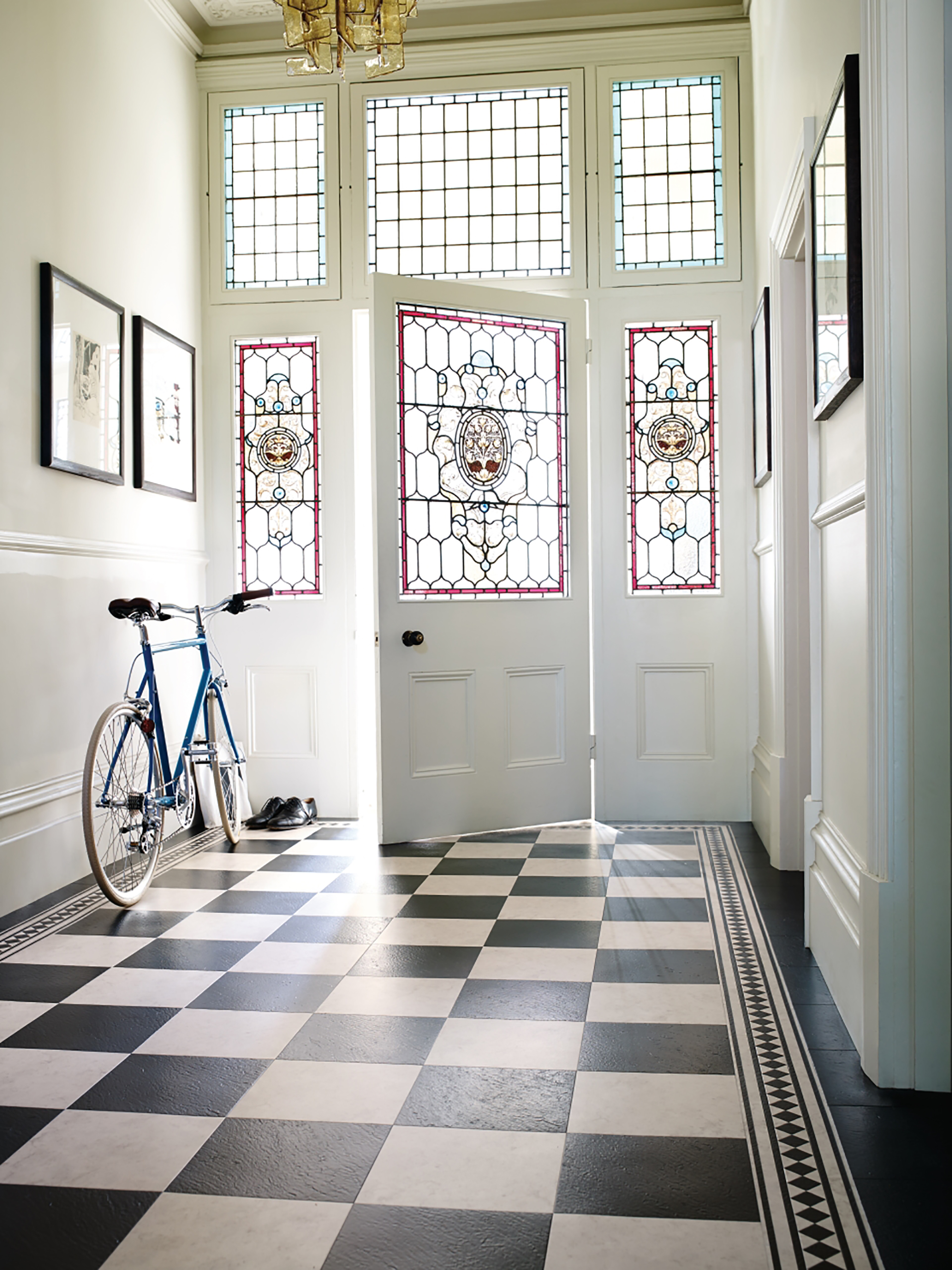
Durable and easy to clean, 'luxury vinyl tiles are the perfect solution for any family looking for a low maintenance flooring, whilst still looking aesthetically pleasing,' says Sarah Escott, design manager at Amtico.
'It’s extremely durable and robust and is resistant to stains making it great for any room in the home, in particular high traffic areas. Furthermore, LVT flooring is warm underfoot and can be used with underfloor heating making it the perfect choice,' adds Escott.
As well as having a wealth of practical benefits there are also a huge array of designs available, from wood and stone look, to playful geometric designs. If you have a large hallway consider a design with a border as this will put an emphasis on the boundary of the space.
11. Add warmth and softness with carpet
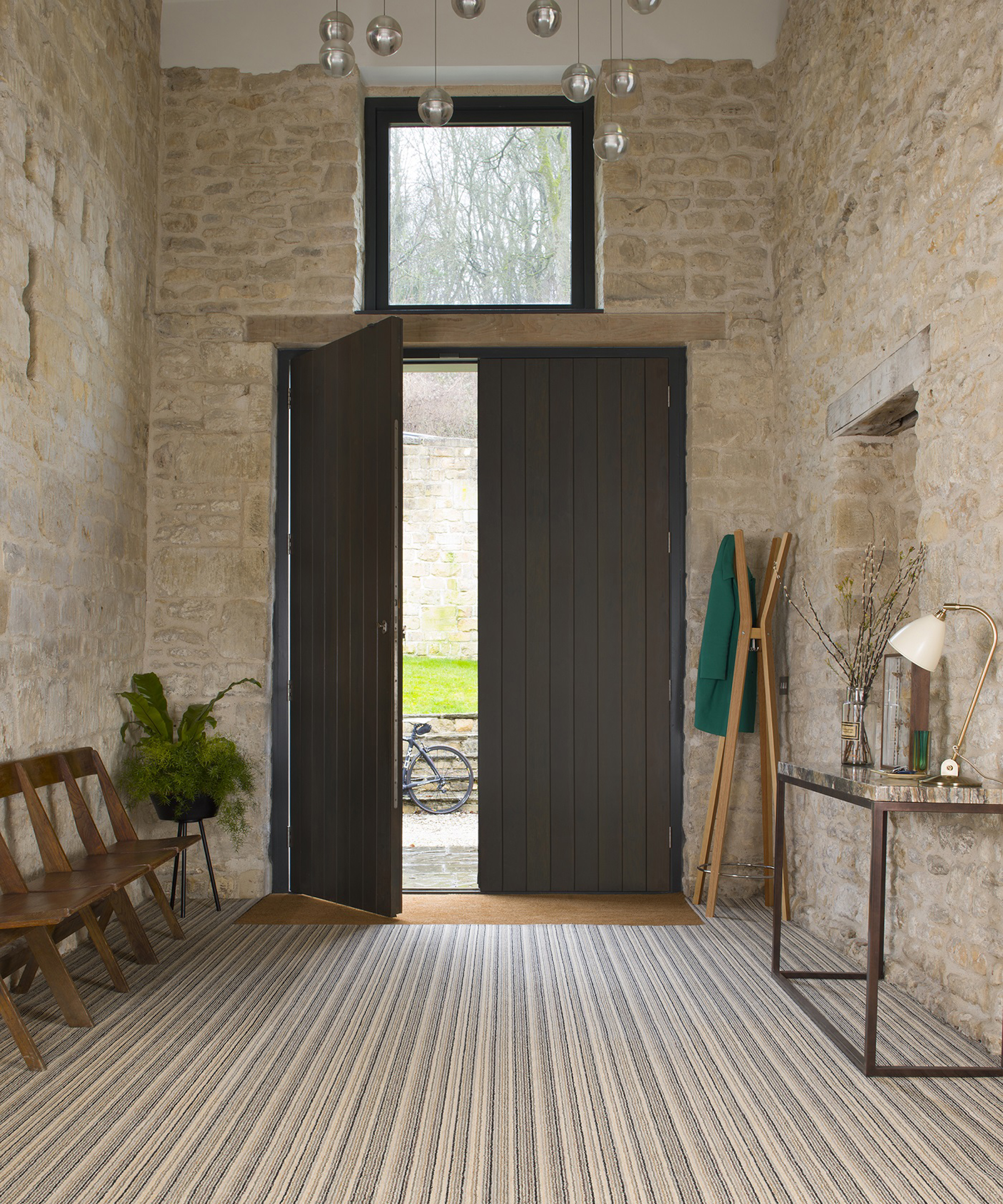
Hallway carpet ideas are a brilliant way to create a warm welcome in your home and are guaranteed to bring instant cosiness. While it may not be the first choice you think of when it comes to hallway flooring a fitted carpet trend can make a particularly good flooring choice for large hallways due to their ability to deaden sounds.
With its grand proportions, large door and exposed stone walls this hallway in a converted barn could be easily run the risk of being echoey and cold, but a subtle stripe carpet fitted helps bring instant comfort. If you are considering carpet in a hallway then consider wool, says Jodie Hatton, residential design manager at Brintons.
'Wool-rich carpets are known for their quality because they are highly durable, which helps maintain their appearance. Wool provides luxury underfoot and helps to insulate your home for warmth and comfort. It absorbs sound to give a sense of calm and tranquillity. It is naturally fire resistant and fall-friendly for little ones.’
A carpet with a pattern such as a fine stripe works well in a hallway as they help disguise dirt and stains, too.
What is the best flooring for a hallway?
Hardwearing, durable materials such as solid stone, wood – solid and engineered – and ceramic tiles, are the best types of flooring for a hallway as these are one of the busiest rooms in the home that receive a high level of footfall. Carpet can also be a practical choice for high traffic areas provided it is made from a hardwearing fibre such as wool and is a low pile or flatweave design.
Combining the beautiful, grain of real wood with extra stability and the ability to be laid over underfloor heating, engineered timber makes a practical and stylish choice for hallways which will stand the test of time.
'While the temptation can be to opt for wood-effect flooring to help keep costs down, nothing quite beats the real thing, with engineered wood flooring creating a high-end finish that is surprisingly simple to care for and extremely durable,' says Peter Keane, Director of The Natural Wood Floor Company.
'Engineered board has up to 11 layers of plywood backing, with each layer glued at a 90-degree angle to the adjoining layer. The surface layer of a precious hardwood is then glued on top, resulting in a much more stable floor with a robust construction, which can be used with underfloor heating too, so your real wood floor is as warm to walk on as it is to look at.'
If you don't have underfloor heating then hard floors can run the risk of feeling cold, adding a runner is a brilliant way to add instant warmth and will help to cushion sounds of constant footfall but can also help add instant personality.
'Following the trend for hard floors people are realising that a soft floor can be an undeniable luxury,' says Andy Guard, creative director at Roger Oates Design. 'A hallway runner creates instant style and warmth. As you only pass through the hall you can afford to be bold with design and add an injection of colour to an otherwise neutral house. '
Should you tile a hallway?
Tiling a hallway with solid stone, porcelain, ceramic or encaustic tiles is a brilliant way to create a hardwearing, durable floor that can withstand high levels of wear and tear, yet they can be beautifully decorative, too.
Boasting subtle natural markings, solid stone will bring a subtle, rustic look while. Alternatively ceramic and encaustic tiles are available in a huge array of colors, patterns and can be laid in endless geometric configurations to create a striking and playful focal point.
Sign up to the Homes & Gardens newsletter
Design expertise in your inbox – from inspiring decorating ideas and beautiful celebrity homes to practical gardening advice and shopping round-ups.

Pippa is a contributor to Homes & Gardens. A graduate of Art History and formerly Style Editor at Period Living, she is passionate about architecture, creating decorating content, interior styling and writing about craft and historic homes. She enjoys searching out beautiful images and the latest trends to share with the Homes & Gardens audience. A keen gardener, when she’s not writing, you’ll find her growing flowers on her yard for styling projects.
-
 These 5 plants can help you get the best, and potentially tastiest, broccoli ever – discover what to plant with broccoli, and what to avoid
These 5 plants can help you get the best, and potentially tastiest, broccoli ever – discover what to plant with broccoli, and what to avoidOur selection of vegetables, herbs, and flowers is perfect for companion planting with broccoli
By Drew Swainston Published
-
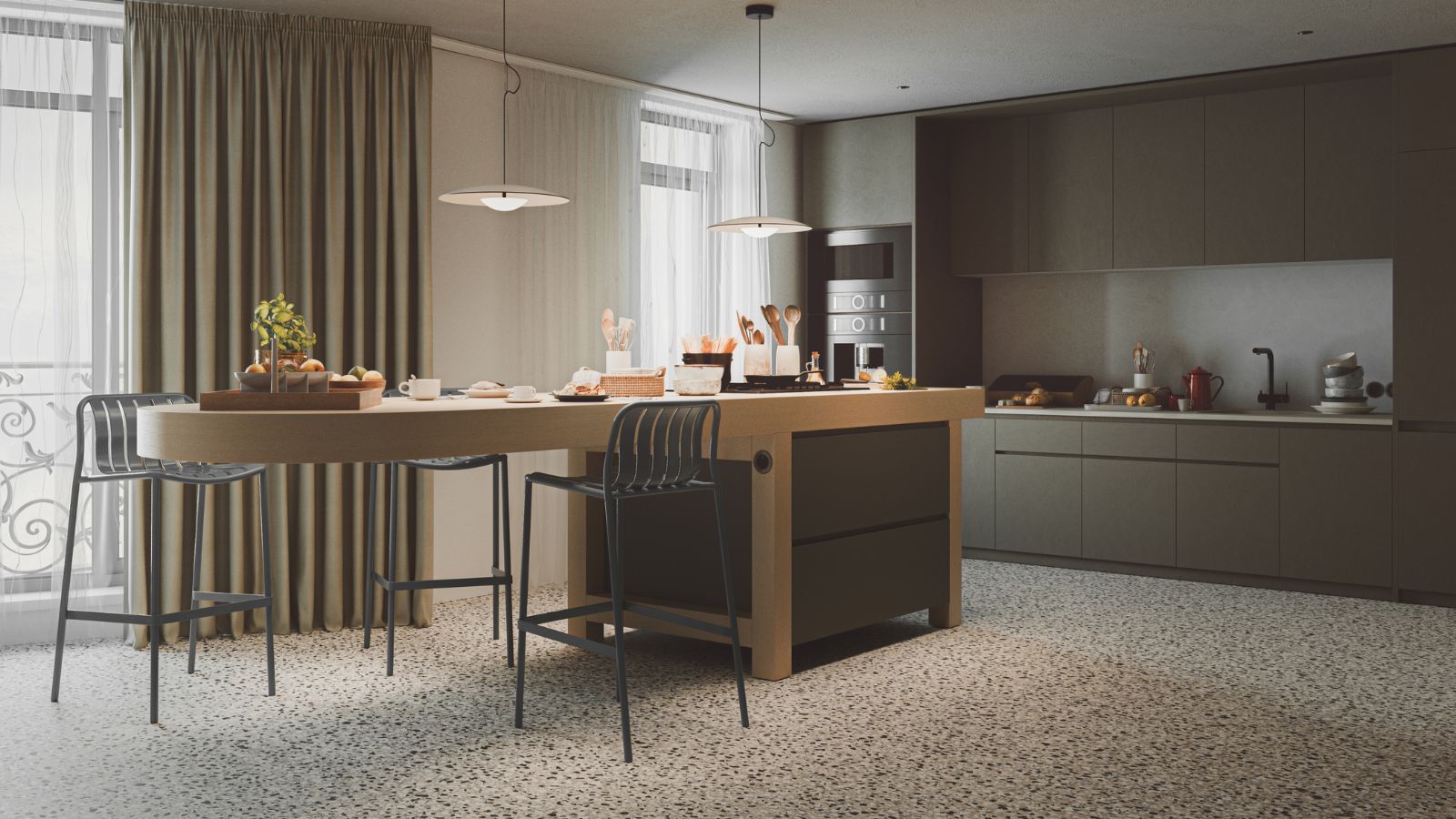 How to clean a terrazzo floor in 5 steps – expert tips to scrub, shine, and seal this sparkling floor finish
How to clean a terrazzo floor in 5 steps – expert tips to scrub, shine, and seal this sparkling floor finishAvoid damage and protect it's shine with these expert tricks
By Chiana Dickson Published